In 2015, Apple dramatically enhanced its ability to make money, and at the same time incrementally dismantled the profit engines of its competitors, leaving them even weaker for their next match in 2016. But Apple has several weaknesses related to the core strength of its existing ecosystems that it needs to address over the coming year if it wants to retain and enhance its brand of excellence that drives sales of its premium, profitable hardware.
Apple Infinite Loop Campus
Apple's busy 2015 in hardware
Looking at Apple's income statements, it appears to be almost entirely a hardware maker. Only about ten percent of Apple's $233.7 billion in fiscal 2015 revenues came from Services, the one business segment that isn't centered around hardware sales.
However, one of the core reasons people buy iPhones, iPads, Macs and related products and accessories— all at far higher retail prices than commodity smartphones, tablets and PCs— is because they work well together and also connect well with other technology providers' content, software and services. The ecosystems supporting OS X, iOS, iCloud and iTunes invisibly drive Apple's sales.
Apple is doing a great job at producing hardware. Over the past calendar year, Apple launched a series of significantly new products, in addition to enhancing its existing MacBook Pros, iMacs and iPod touch.
In March, it introduced the all-new MacBook, its lightest, thinnest Mac ever— essentially a new MacBook Air equipped with a Retina Display and a new Force Touch pressure sensitive touchpad. Alternatively, you could also look at it as being an iPad paired with a physical keyboard and running Apple's full OS X desktop environment.
Apple doesn't break down its Mac sales by model, so the public doesn't know how well the new MacBook is selling compared to cheaper, older MacBook Airs or the more expensive and performant MacBook Pros, nor how well the iPad-esque MacBook sells compared to regular iPads. However, Apple does know this.
It now has another year of data on what its upscale customers want and will pay for. That data will shape the future of its Mac and iPad development. No other PC manufacturer knows this, which is important because they can't seem to develop machines that they can sell in similar quantities at a similar profit. Most PC makers (such as HP) are barely making 3 percent margins, while throwing a huge array of PCs and tablets at the market to see what sticks.
At the same time, Microsoft struggles to sell its very expensive Surface PCs in tiny quantities with the goal of earning sustainable 30-40 percent margins like Apple. Over the last three years however, Microsoft has largely only discovered what doesn't sell well and what loses money: "Surface RT" ARM-based Windows PCs.
Surface RT was supposed to be the core of Microsoft's new devices strategy for the decade of the 2010s. Instead, the company is now starting over with expensive, Intel-based Surface Pro PCs equipped with detachable screens, the core of its strategy from two decades ago, back in the year 2000 when Bill Gates predicted that was what everyone would be using in a few years.
Back to Apple: In June, it introduced the new OS X 10.11 El Capitan, iOS 9, watchOS 2 and Apple Music. In September, it launched new iPhone 6s models featuring 3D Touch and A9 processors, alongside a faster, larger iPad Pro with precision Pencil support and an entirely new tvOS platform for the all new 4th generation Apple TV.
That means that this year, Apple jumped from two major device platforms to four, after 30 years of just Macs and seven years of iOS. Back in 2007, Apple delayed its OS X Leopard release to finish iOS. It now has three very different iOS-based platforms, each with a unique interface style, all being developed in parallel for nearly simultaneous annual releases (or in the case of this year's watchOS, biannual).
Now compare the release schedule of Apple's OS rivals this year. Google released a new Android 6, but last year's Android 5 has still not achieved widespread acceptance. Microsoft's Windows 10 was supposed to finally get its OS strategy back on track, but at this point it simply doesn't matter on mobile devices, and the only way it can get its once highly profitable Windows software on new PCs is to force it out as a free upgrade.
Apple's OS updates are also free, but Apple earns big money selling hardware; Microsoft does not. And rather than leveraging its Windows PC strength to lend some support for Windows phones, Microsoft's Lumia models are so embarrassingly shoddy that they cast a doom halo over the Windows brand, sort of the opposite effect that iPods once had for Macs.
In smartphones and tablets, Samsung's profits have collapsed so far and so fast that analyst Ben Bajarin (who does not make comical, outlandish predictions) has stated that he expects the company will pull out of the business of smartphones within 5 years.
In parallel, Sony, Toshiba, Fujitsu, HP and Dell have all considered ways of getting out of the terrible PC market. This is the same market that Apple's Macs are in, but Apple saw its unit sales increase by 9 percent over the last fiscal year, becoming a $25.5 billion business. Apple is quite incredibly making more and more money in multiple market segments that are flat or sinking for everyone else.
Even if nothing changes, Apple's hardware sales in 2016 will continue to be blockbuster. In fact, even if Apple's iPhone sales reach an apex and flatten off (an idea that is as far fetched as the phony problems Apple supposedly faced in 2008, when Wall Street irrationally cut its valuation in half based on similar analyst worries and concerns about macroeconomic global beleaguerment), Apple will continue to make virtually all of the available profits of all the smartphone, tablet and PC makers.
Things for Apple to address in 2016
That doesn't mean that there's nothing left for Apple to do but incrementally enhance its hardware. In fact, there hasn't even been more opportunity for Apple to pursue in the history of the company. Apple now has more capital than ever, far more employees and it now has those four platforms to develop upon— more than it ever has had. It also has more market power than it has ever wielded, including vertical control over the world's most advanced mobile processor SoCs and incredible power to buy up entire production chains and fabrication capacities.
In hardware, Apple is now leading the smartphone, tablet and PC markets in terms of technology, with few exceptions. This hasn't really happened before.
In the early days of iPhones, Apple's cameras were inferior when compared to other high-end smartphones, and its support for mobile networks and features such as 4G LTE and WiFi calling and video messaging trailed the competition by years. Apple arrived at fingerprint scanning and NFC payment technologies much later than the beta-introductions of its competitors, and chipmakers from Qualcomm to Nvidia to TI were all producing faster, more capable processors.
However, today Apple's iPhones possess among the best camera sensors and camera logic; the company has very competitive support for mobile features (including the leading chat service behind Facebook's ubiquitous albeit less secure Messenger) and it has advanced its A-series SoC CPU and GPU cores into first place. What's left to do?
First and foremost, Apple needs to focus on the ecosystems that give buyers good reasons to continue to prefer its premium hardware products. That includes HomeKit, Apple Pay and Maps.
HomeKit
While not the most important ecosystem right now, Apple needs to rapidly advance its support for HomeKit and act to drive down the price of Siri-controlled switches. Adding HomeKit to your life is addictive. If Apple makes this a priority, it could rapidly make its secure HomeKit protocol the standard that everyone includes in their silicon. It can't simply roll out a half-finished specification and expect the "community" to adopt and finish it the way Google does with everything it creates.
Apple needs to actively make 2016 the "Year of HomeKit," and take action to drive prices down so that a single light switch costs more like $5-10 rather than $50. This is an area where Apple has to choose between earning significant per-item licensing revenue on an ecosystem that could end up an overpriced niche that sells only in limited quantities, or cultivating a vast ecosystem closely tied to Apple's hardware but that generates very small licensing revenues over huge volumes of devices.
Either strategy might seem like a wasted effort commercially. However, in seeking a middle ground, Apple could offer a limited 1-2 year term of licensing fee abatements, where partners could save big on HomeKit licensing fees if they meet aggressive unit cost reduction goals to reach new customers and broaden the popularity of HomeKit as it emerges. Apple also needs to aggressively drive its own efforts toward making HomeKit more broadly functional and more reliable and easy to set up and use.
I've been using HomeKit with Insteon controllers and Philips Hue lamps. The more I use it, the more control I want over my home. But at the same time, relying on fairly-okay apps from its third party partners isn't good enough. Apple needs to invest more effort into making sure products branded as HomeKit are consistently excellent.
If it doesn't strictly manage HomeKit, Apple will find itself holding onto another Android, with a platform could have been usable if it weren't for the self-destruction of the cat-herd of hardware makers screwing everything up.
One strategy Apple could pursue would be to create its own Home app for iOS and Macs, enabling third parties to add features to it via App Extensions. The app could map out the user's home(s) and directly control every device capable of communicating with HomeKit. This could greatly simply the setup of HomeKit's locks, sensors, switches and motors, organizing them into Scenes, configuring Triggers and making it easier to conceptualize how Siri will interpret commands. Currently, HomeKit is a bit of a black box, interpreted and presented differently by each partner.
So far, Apple has left all this to its partners, resulting in a hodgepodge of different apps (below, as shown by Apple). With its own well-designed, first party Home app, Apple could bring the same consistent interface to Macs, iOS devices and to Apple TV, and allow its partners to expand and customize just the components they make. Essentially, this would turn HomeKit into an App Store of sorts, allowing smaller developers to concentrate on the value they add, bubbling competency to the top in a real meritocracy. This could also help make developing HomeKit devices less expensive, and open things up to the hobbyist market in new ways.
Imagine building your own digital device and then simply plugging it into Apple's HomeKit platform with a cheap, off the shelf computer module and a Home App Extension. This could bring a wide array of educators, tinkers and high-end custom device makers under Apple's HomeKit ecosystem. That would be far more valuable than an incremental rollout of just a few expensive switches from a limited number of hardware makers with the resources and interest in developing their own HomeKit app from scratch.
Compare HealthKit, where Apple does have its own Health app, and even launched ResearchKit as a free, profitless initiative to drive innovative applications of the technology. HealthKit has found rapid adoption from universities and medical centers interested in building a series of novel, never done before projects. That's the kind model Apple should be replicating in HomeKit, rather than another half-assed, do-all-the-work-for-us fragmented platform that looks more like a fad initiative from Google.
On the subject of HealthKit, Apple should also bring its reporting app to Macs, allowing users to track their fitness and exercise goals, and even share their progress with family members and online. By turning Health into an award system, as well as expanding the number of users who participate in ResearchKit studies, Apple can not only make its own customers healthier, but also attract new customers who are interested in self-improvement and health science and research.
Apple Pay
Tim Cook called 2015 the Year of Apple Pay, apparently out of earshot from the Maps team. But before further consideration of what's wrong with Maps, let's take a look at Apple Pay. It has been very successful, and was rolled out in a very slick way; again, with its own first party app running things with a clean, virtually perfect and flawless interface that is effortlessly easy to use.
The biggest click-baiting criticism leveled against Apple Pay has been the often-reported issue of acceptance by merchants. While many chains have installed new credit card "chip and pin" terminals that also include the NFC reader required by Apple Pay, a large percentage of these merchants haven't yet turned on either the new chip and pin or NFC.
That will soon change, because U.S. law is increasingly mandating chip and pin acceptance as part of an effort to crack down on the easy-to-defraud existing magnetic swipe terminals, which can be fully exploited with a simple snooping device known as a "skimmer," installed to surreptitiously steal users' credit card data as they make a payment or use an ATM.
A series of merchants have recently reported finding such snooping devices on their stores' card-swipe terminals, including Safeway grocery stores in both California and Colorado earlier this month, and scores of Michaels craft stores nationwide earlier this year.
Magnetic swipe is an archaic, mid-century technology that encodes the user's name, account number and card expiration date as a simple magnetic barcode without any encryption at all, making it easy for hackers to pilfer that data by simply snooping on transactions.
Some retailers (notably including Target, which was stung by an embarrassing credit card data breach) already require buyers to use the chip and pin on any EMV cards that support it, rather than swiping it.
Apple Pay not only uses encrypted NFC (which hackers can't skim any useful data from via rudimentary devices), but also only provides the merchant with a one-time token rather than the card holder's full account number (which can be used over and over again by anyone who gains access to it). At some merchants, the quick convenience of using Apple Pay is negated somewhat by an unnecessary additional requirement to supply a PIN or sign a receipt. This is related to the newness of NFC, which retailers are still struggling to roll out.
However, Apple Pay's emergence in 2015 appears to be timed just perfectly to coincide with the broader rollout of chip and pin. Not only is chip and pin playing an assisting role in delivering new terminal locations capable of accepting both EMV "push" cards as well as NFC transactions from Apple Watch and iPhone 6/6s users, but EMV is being rolled out in a such a bizarrely complicated fashion in the U.S. that many users will see Apple Pay as vastly superior.
While chip and pin style cards were rolled out more than 15 years ago in Europe— offering a payment experience that was both quick and convenient, for some reason the same EMV cards in the U.S. are required to be shoved in a payment device and left there for several seconds, throughout the entire transaction. This is the case at Target, where EMV cards can't be swiped. At a variety of other retailers accepting EMV cards, vendors frequently have signs taped on the terminal warning users to stick in their cards and not to remove them until signaled to do so.
This requires users to expose their EMV card in a long, clumsy transaction that makes it easy for anyone nearby to visually capture their printed card number the same way that magnetic card snoopers can snag card information electronically.
Unless this clumsy implementation is fixed, it will make EMV cards feel significantly less convenient to use for many buyers, offering Apple Pay a window of opportunity to shine as an easier and faster way to pay— without exposing users to the security flaws inherent in the easily pilfered mag swipe used on most of today's American cards. Unless this clumsy implementation is fixed, it will make EMV cards feel significantly less convenient to use for many buyers, offering Apple Pay a window of opportunity to shine as an easier and faster way to pay
What can Apple do better with Apple Pay? For starters, Apple should act quickly to roll out the ability for users to pay each other directly, perhaps within iMessage, as has been rumored. Not too quickly however, as Apple should be really careful about introducing something that can be easily used to defraud and spam. Unlike every other smartphone platform vendor, Apple actually owns its own secure messaging system that is broadly used, which will make personal payments a lot easier.
Secondly, Apple should consider aggressively marketing its own iOS-device based payment terminals to other retailers. The company did some pioneering work in transforming retail from a cash register centric experience to one where its own retail employees work with customers directly, via a mobile Easy Pay device, beginning a decade ago.
Apple needs to spread this experience outside of its own stores, either working with partners like Square, or in commercializing its own iPhone, iPod touch or iPad accessories to support point of sale purchases.
Target is among a variety of stores working to do this on its own. Next to its old fashioned registers, Target retail employees are using conventional iPads to manage online order pickups and other novel services via custom iOS apps. The retailer also uses its own iOS-based scanners for inventory tracking, pricing and customer service (both, above). The store also has iPads on display for its gift registry (below).
The Apple + IBM partnership is already targeting mobile-optimized retail solutions as a priority opportunity to transform business, including an Express Pay app for sales people (below), as well as Order Commit and Dynamic Buy apps for merchant buyers and a Pick and Pack app for inventory managers fulfilling orders.
That app, along with a Sales Assist app for retail associates, both use iBeacons to quickly map out where items are located in a store. So on the business end, Apple is building an enterprise ecosystem to sell iPads and iPhones.
On the shopper side, Apple also needs make it easier to find Apple Pay merchants in the real world. Maps has been begging for better point-of-presence data for years, and Apple is just now getting there with the improved universal search in iOS 9.
However, this search doesn't also work within Maps itself. Instead, bizarrely limited (or just asinine) search results are given more often than not. It's not clear why the Maps team is so isolated from the search capabilities found elsewhere in iOS, but this needs to change.
Maps
Beyond the simple task of searching for Apple Pay merchants, Maps needs a way to distinguish searches for a type of business, a business by name, and an address. Currently, both Maps' search bar and Siri present only a Googleesque "I'm feeling lucky" result when you search. This needs to be improved, because there hasn't been much luck associated with this approach.
Things did get a little better in iOS 9 with its iconified search category interpretations. If you type "GAS," you now get buttons to search for gas stations, gastropubs, gastroenterologists, and service stations, in addition to specific result listings (below left).
It would be great if this sort of search refinement were expanded to include other things a user might search for, outside of basic single-point addresses. For example, imagine how great it would be if you could search for a national park or a zip code, and get a highlighted region rather than the single pin drop introduced by Steve Jobs back in 2007. Type in a street name and it highlights the entire street paths that match. Type in "&" between two street names and it narrows your search results to the potential cross-street matches you entered.
Currently, when I type "second & burnside," rather than getting a pin drop on the intersection of NW 2nd Ave and Burnside St that is ten blocks from my current location in Portland, Oregon, or the NE 2nd Avenue and Burnside intersection that's a mile and a half away on the other side of the river in my same city, I mysteriously get a pin drop on E 2nd St in Burnside, PA, located 2,600 miles away (above right). That's absurd.
Alternatively, typing "2nd & Burnside" mysteriously drops me at 2nd St in Dallas City, IL, which is 1,974 miles away. Just typing "2nd" by itself skips past both of the "Second" avenues in Portland, including one that's just five blocks away, and instead transports me to a pin dropped in the second arrondissement of Paris, which Maps won't even guess how far away it is because it doesn't know how to generate driving directions across the Atlantic.
For a company that prides itself on hardware reductions of one millimeter in thickness and takes pride in achieving nearly instantaneous fingerprint scans via Touch ID, Maps' search results are an appalling embarrassment. If nobody at Apple can figure out how to parse a search field to determine relevant location results, the company needs to make some new acquisitions. For a company that prides itself on hardware reductions of one millimeter in thickness and takes pride in achieving nearly instantaneous fingerprint scans via Touch ID, Maps' search results are an appalling embarrassment
The completely dysfunctional search for nearby streets in Maps is so bad it's hard to even comprehend. This should have been fixed long before steps were taken to perfect the details in the Flyover images of Hoover Dam. I'm hoping this basic search functionality can be fixed in 2016, but I'm also hoping for more from the Maps team.
Being able to intelligently identify neighborhoods, city limits, rivers and other regions, rather than just pin points, would add tremendous value to the Maps app. Being able to overlay new kinds of map data (such as land values, demographics, animal habitats, earthquake and flood zones, etc) on the basic street, transit and aerial maps Apple provides is also long overdue. Maps should be an example of innovation, because location data is incredibly important to virtually every iPhone user.
Also remember that Apple Maps isn't just three years old. Apple created the first Maps app in 2007 for the original iPhone, drawing from Google's server data. But it was Apple, not Google, that invented the new way to peruse maps on a mobile device. Unfortunately, Apple hasn't kept up the pace. It needs to radically enhance its mapping abilities on the client, not just improve upon its own server backend supplying the data (and those often atrocious search results).
One way Apple has improved its client (in tandem with the backend) is with Flyover, an innovative way to view aerial maps in 3D perspective. While Apple has exposed the APIs to allow third parties to show animated Flyover maps in their own apps, Apple itself has only added a few 3D Tours to specific cities.
It should make these Flyover tours easy for users to define and share, so you could send a friend a Flyover showing an animated path on the map, such as the directions to your house. This only requires defining a point, a path and an pitch, which Maps can already use to generate dynamic Flyovers. Apple is sitting on this advanced technology that nobody else has. It needs to make it broadly available as a strong differentiator in iOS, immediately.
This is one area where Maps on Macs could shine: enabling desktop users to do more than just the most basic search and viewing features available on iOS. Imagine a Maps app for Macs that could easily define a custom Flyover, then save it to an iCloud synced listing of Flyovers that the user could then send from their iPhone, or export as a static video for sharing on Facebook or embed in a mobile website, or anywhere else. Now imagine Apple creating a Maps app for Apple TV that lets you view these Flyovers on your TV. This is all actually pretty basic stuff, it just isn't being done, yet.
Maps on iOS also needs to rapidly roll out transit data for more cities. The glacial pace at which new cities and regions are coming online makes Apple look like a poorly funded startup operating out of a garage. With $200 billion in the bank, it's sort of puzzling that Apple hasn't been able to connect the dots faster, particularly in cities where transit is very important, or at least has corridors that would be easy to add.
That includes Vancouver, Seattle, Portland, Denver, New Orleans and Minneapolis, and in Europe, Stockholm, Helsinki, Copenhagen, Hamburg, and well, the entirely of Germany's Deutsche Bahn, all of Switzerland, Italy, the UK and France, just for starters. And Japan. There's a lot of Maps Transit work for Apple to get done in 2016.
Alternative mapping services for bicyclists (already supplied by Google) would also be nice, as well as adding hiking maps for outdoor users and specialized location maps for indoor use. But rather than taking on all of this work itself, Maps offers another huge opportunity for Apple to introduce an App Store-like marketplace for detailed maps. Maps offers another huge opportunity for Apple to introduce an App Store-like marketplace for detailed maps
Imagine if theme parks, shopping malls, museums, entertainment districts, ski resorts, biking enthusiasts, walking tours and transit agencies could create their own detailed location points, path data and routing systems that could be downloaded via Maps as an App Extension, either for free or for an app-like fee. This would allow Apple to focus on the Maps platform, delegating the specifics of novel use cases to third party partners. Imagine the innovation this could enable.
Along the way, Apple needs to add support for taking map data offline. Early in the game, Apple introduced superior quasi-offline maps for iOS 6 (below) that enabled users to coast along on cached map data far better than was previously possible with Google maps.
However, it now seems as if the Maps app aggressively dumps map data anytime it sees a glimmer of an Internet connection, before even determining if better map data is even available from the server. This should obviously change, as a fair map is always much better than a blank map.
And really, why does Maps ever, ever show a blank grid? The Maps app should at least offer a low resolution state outline showing, at a bare minimum, which way is north. There is never a scenario where a user wants to see a blank grid. Maps should always show something of orienting value.
Even without any data service, an iPhone knows which way north is and it knows its global position via GPS. But without even the most basic offline map outline, knowing only that you are at a blue dot on a blank screen is enragingly frustrating. It's quite embarrassing that Apple even needs to be told this, eight years after introducing the first modern mobile map app.
If Apple focuses real attention upon its ecosystem technologies in 2016, it will have no real problems in selling premium hardware. If it doesn't, it will be opening the door for competitors to offer cheaper products that are less obviously differentiated.
 Daniel Eran Dilger
Daniel Eran Dilger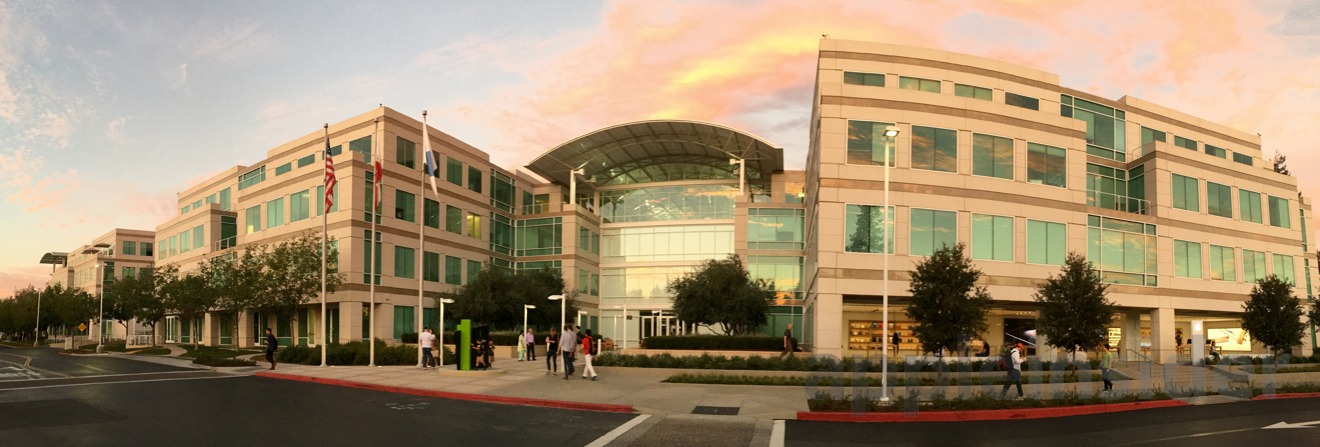
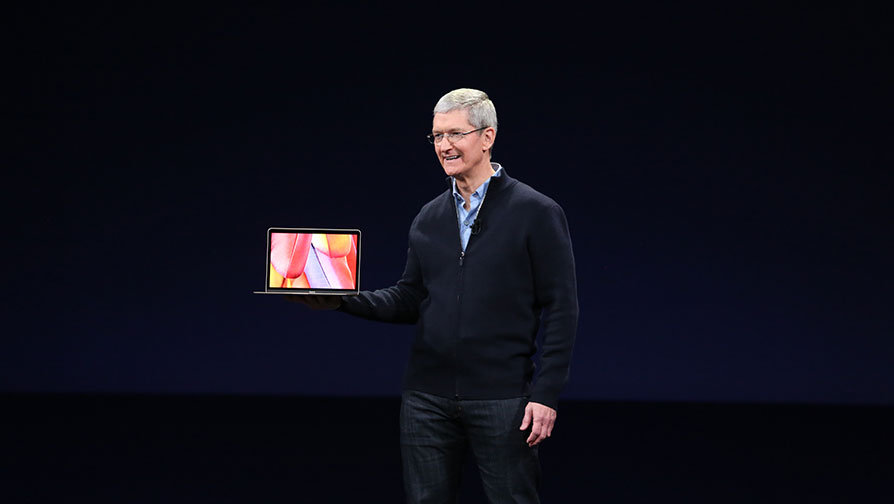
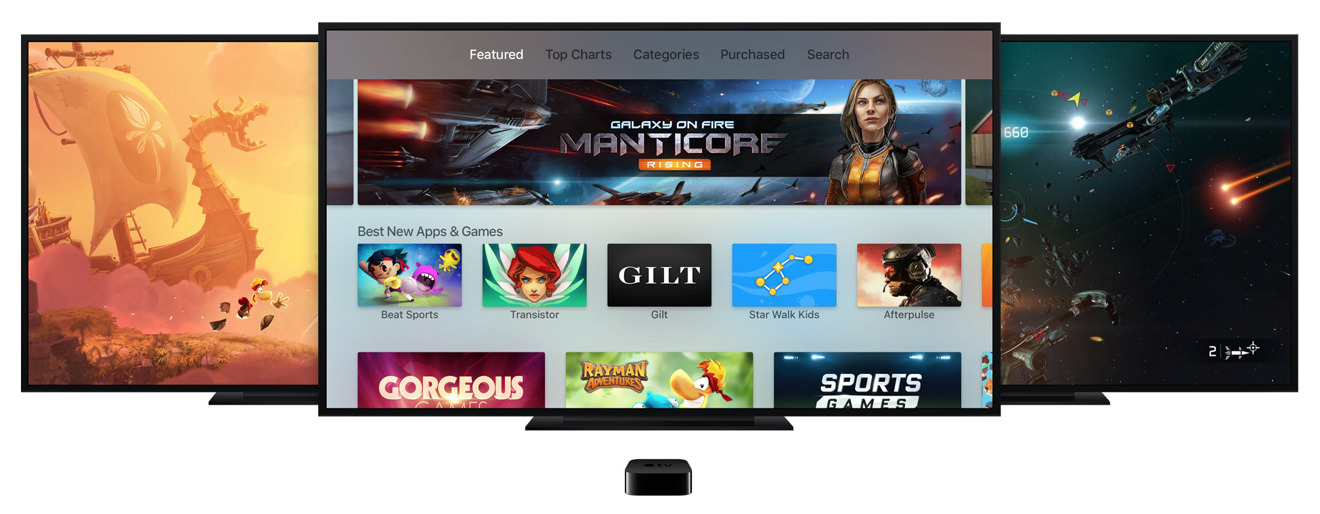
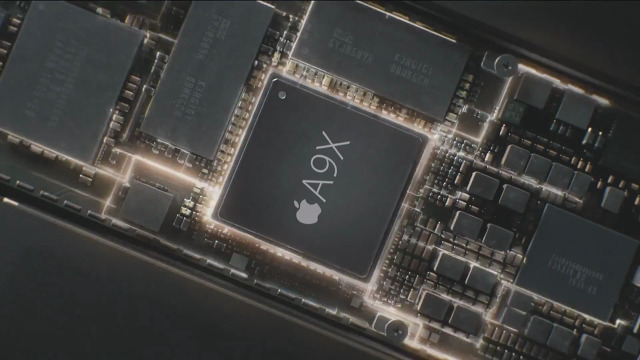
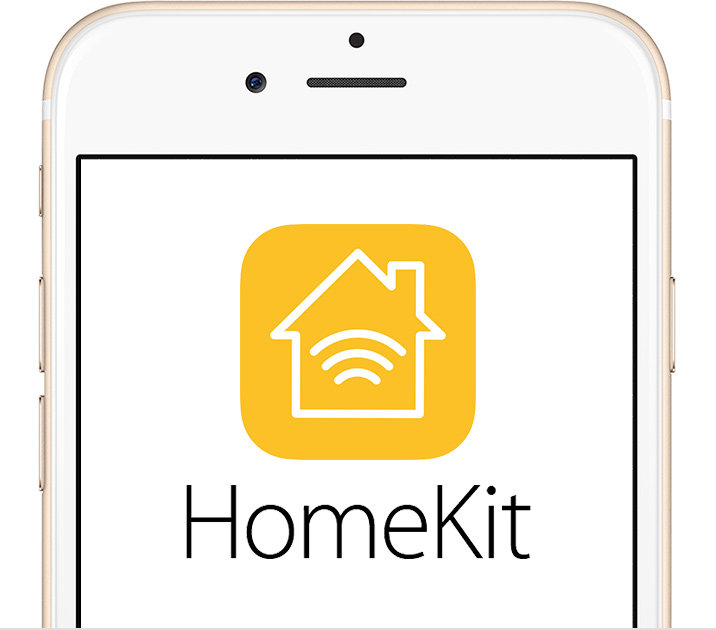
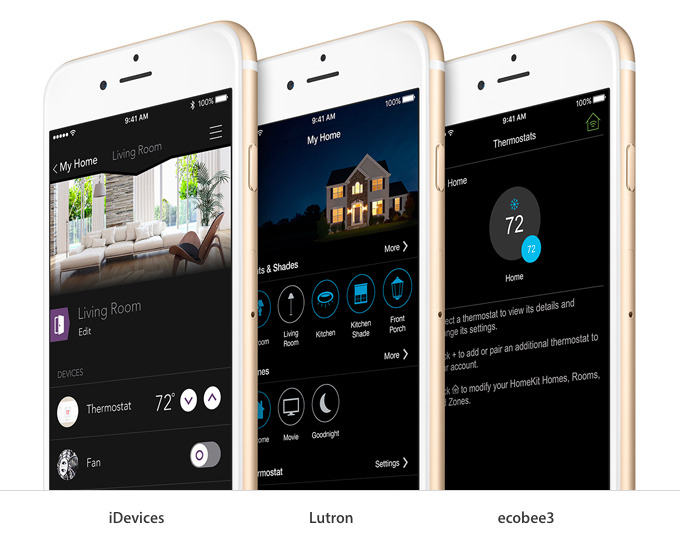
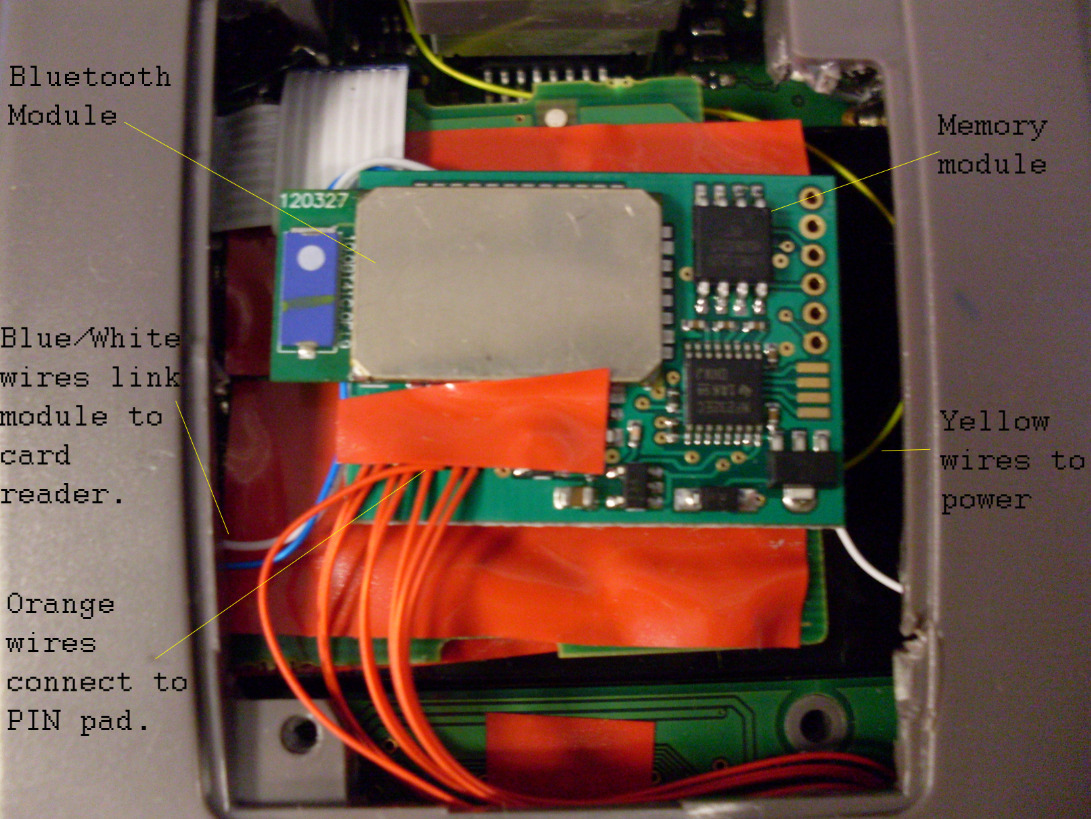
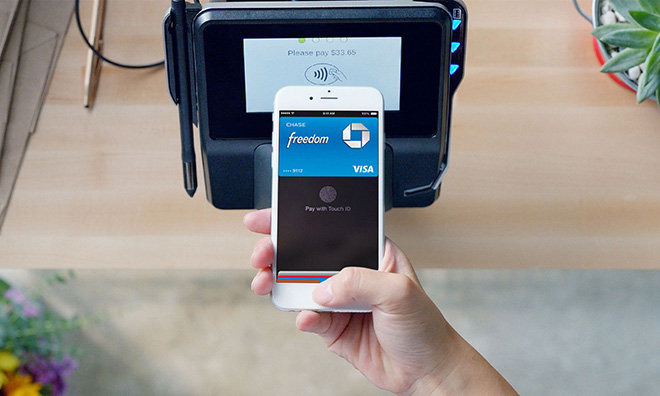
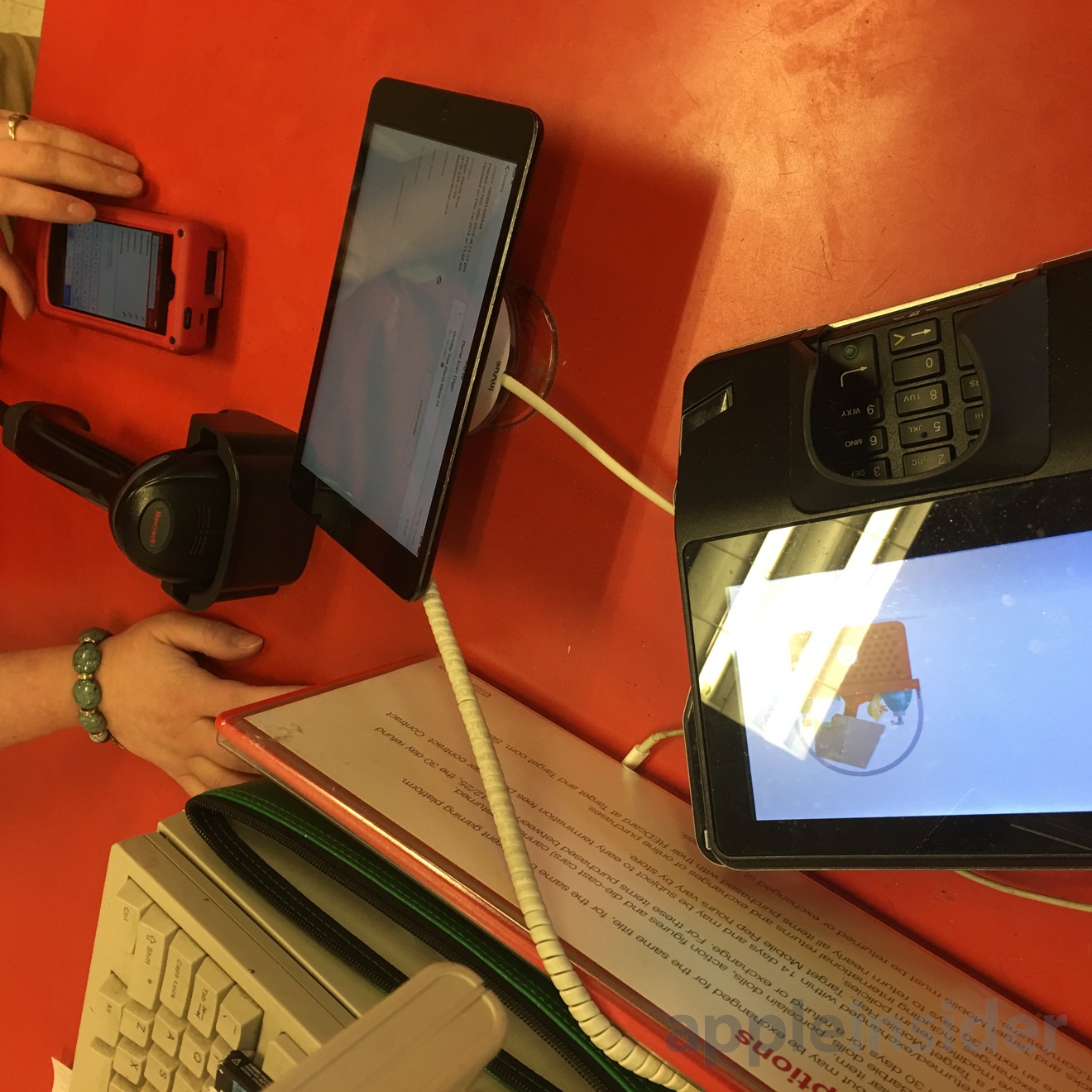
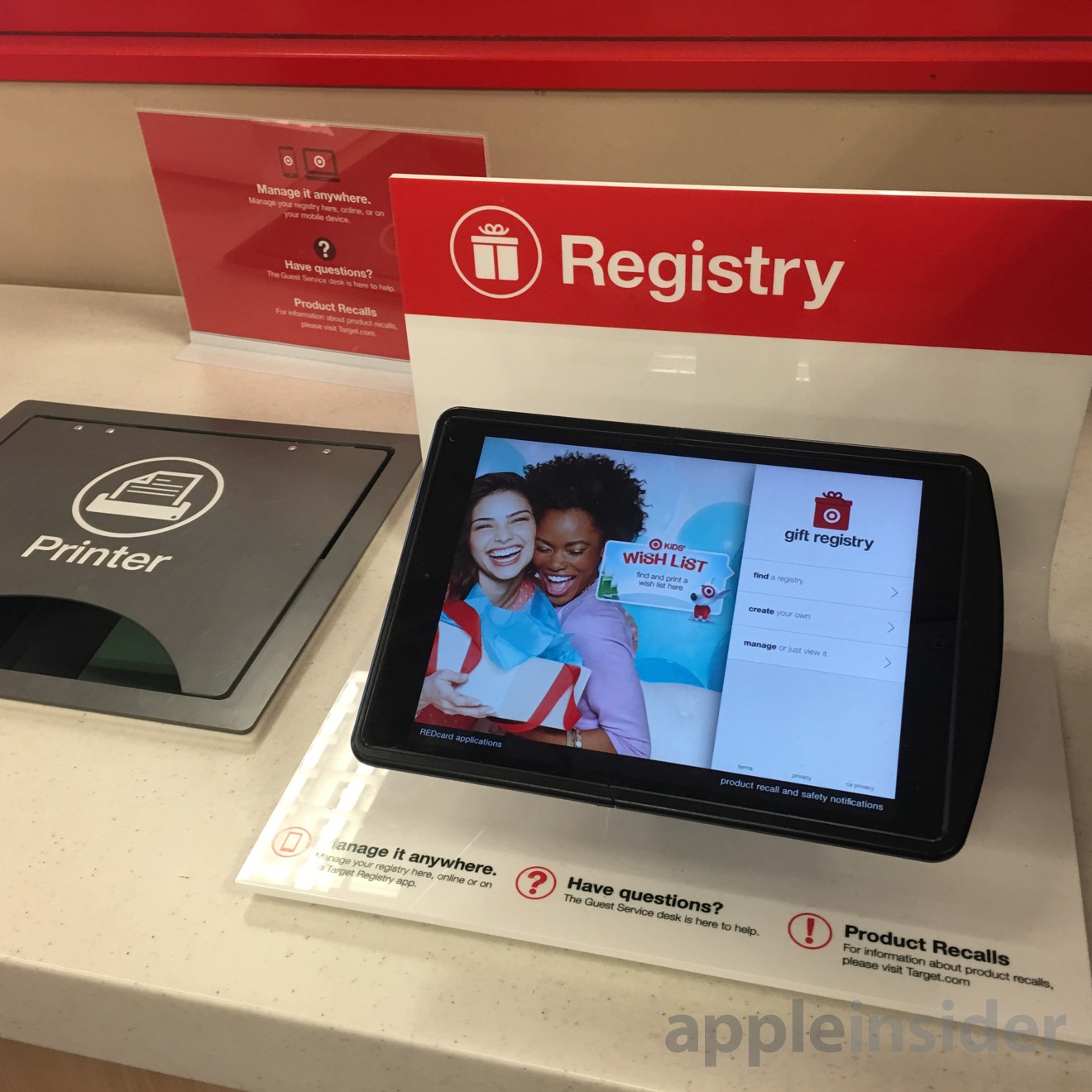
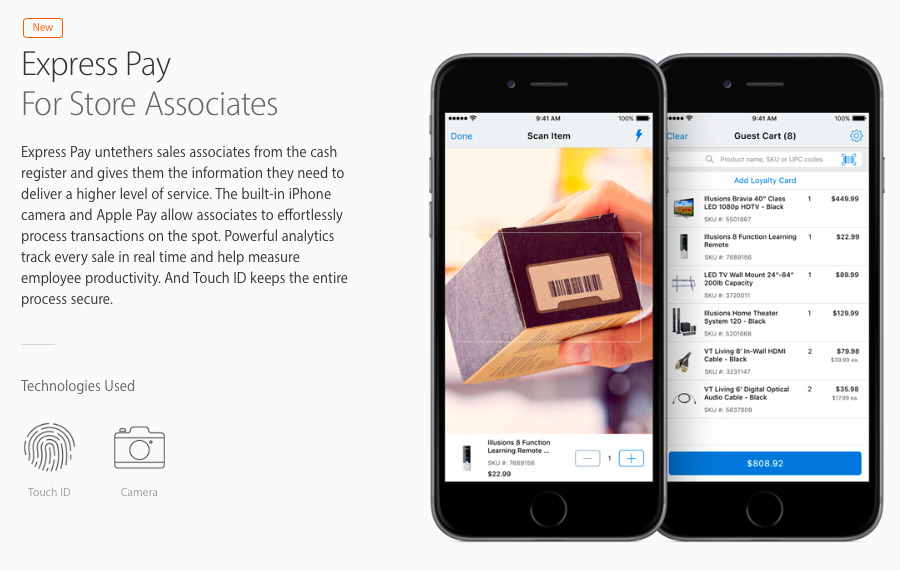
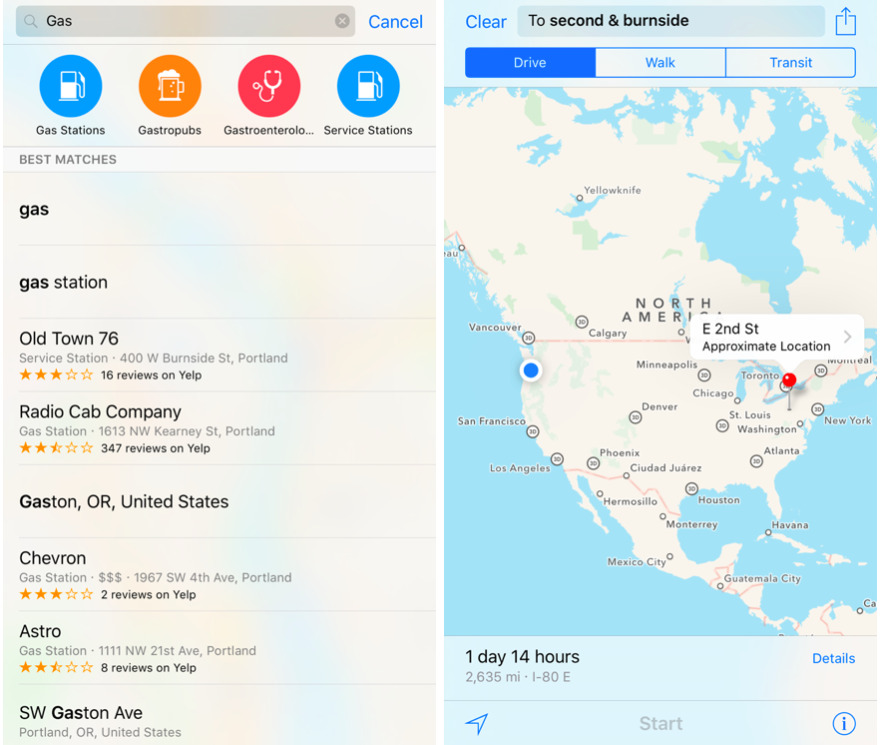

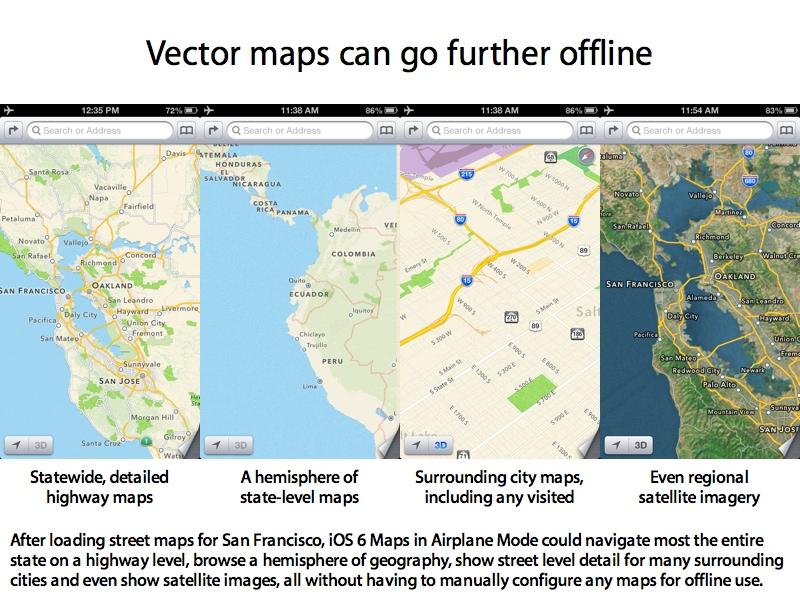







-m.jpg)






 Marko Zivkovic
Marko Zivkovic
 Christine McKee
Christine McKee
 Andrew Orr
Andrew Orr
 Andrew O'Hara
Andrew O'Hara
 William Gallagher
William Gallagher

 Mike Wuerthele
Mike Wuerthele
 Bon Adamson
Bon Adamson


-m.jpg)



37 Comments
I agree with all these points. And would add iBooks Author. This is a huge opportunity for education, yet, no significant update since quite a long time. I am faced with the question whether I should invest further in this software, or look for an alternative. I am about to fear Apple will axe iBooks Author just as they did with iWeb. While iWeb was not an important software, I think iBooks Author defiantly could be. A shame Apple for whatever reason doesn't find it an important product.
I posted this in another thread but I really think Cook needs to hire someone, reporting directly to him, who oversees all of Apple's cloud business. And I would throw maps and Siri in there as well. I think the cloud is important enough that it deserves its own leader reporting to the CEO. This also has the added benefit of showing Wall Street that Apple is serious about the cloud (look at the tech companies Wall Street loved right now and they're all big players in the cloud). Also it would free up Eddy Cue to focus on Apple's content businesses and expanding Apple Pay. Both of those are growth opportunities and would have added benefit of showing Wall Street Apple is serious about creating recurring revenue streams outside of hardware. Also I think those things are more in Eddy Cue's wheelhouse than cloud infrastructure is. All of Apple's products and services could benefit from this.
+1 for HomeKit. I've now spent the money on two different home lightning systems, one to replace the either, and both ended up being completely dead-end products with no hope of future advancement. I should have bought Philips Hue from the start, and now I have wait until I can somehow justify spending a couple hundred on yet another system of lights to replace my current lights, so that I can have the benefit of HomeKit, decent switches, and a decent App.
Completely agree. Nice work, DED.
If there is an AppleCar in the works, I assume Maps would have to improve beyond imagination!
I really hope Apple keeps commercialisation as a consequence of making great products, not the cause.
I continue to look forward to Apple's and DED's future excellent contributions!